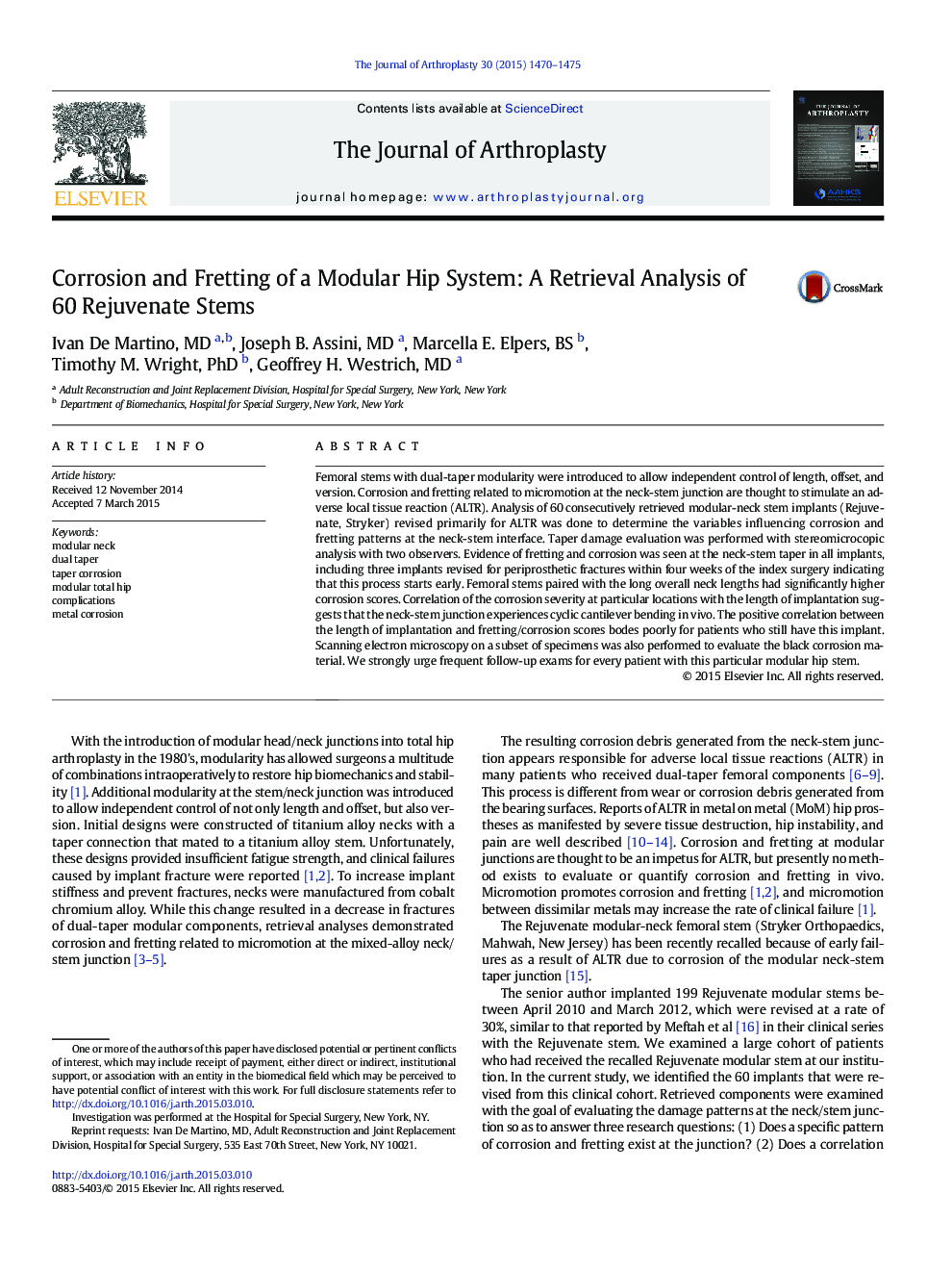| Article ID | Journal | Published Year | Pages | File Type |
|---|---|---|---|---|
| 6209114 | The Journal of Arthroplasty | 2015 | 6 Pages |
Femoral stems with dual-taper modularity were introduced to allow independent control of length, offset, and version. Corrosion and fretting related to micromotion at the neck-stem junction are thought to stimulate an adverse local tissue reaction (ALTR). Analysis of 60 consecutively retrieved modular-neck stem implants (Rejuvenate, Stryker) revised primarily for ALTR was done to determine the variables influencing corrosion and fretting patterns at the neck-stem interface. Taper damage evaluation was performed with stereomicrocopic analysis with two observers. Evidence of fretting and corrosion was seen at the neck-stem taper in all implants, including three implants revised for periprosthetic fractures within four weeks of the index surgery indicating that this process starts early. Femoral stems paired with the long overall neck lengths had significantly higher corrosion scores. Correlation of the corrosion severity at particular locations with the length of implantation suggests that the neck-stem junction experiences cyclic cantilever bending in vivo. The positive correlation between the length of implantation and fretting/corrosion scores bodes poorly for patients who still have this implant. Scanning electron microscopy on a subset of specimens was also performed to evaluate the black corrosion material. We strongly urge frequent follow-up exams for every patient with this particular modular hip stem.
